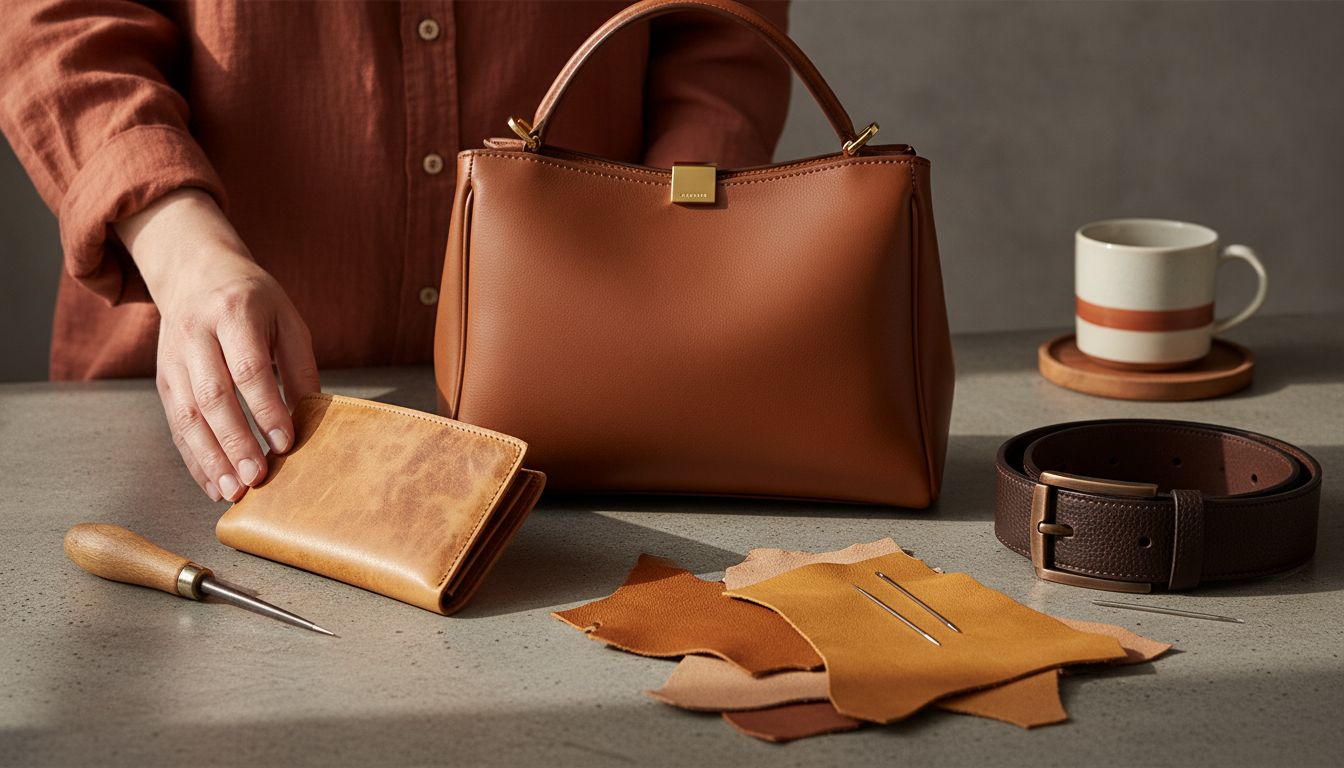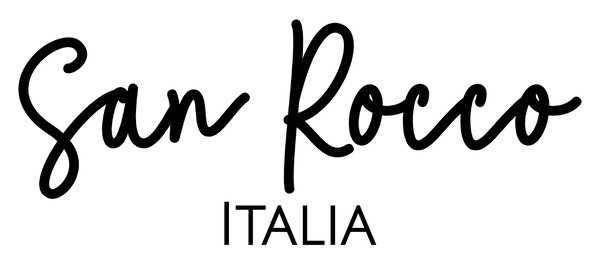
Complete Guide to Italian Leather for Luxury Goods
Share
Italian leather has earned a global reputation for its remarkable combination of beauty and durability. Many luxury designers rely on these supple hides, thanks to a long tradition of expert craftsmanship that stretches back for centuries. With vegetable tanning methods that can take over 20 months to complete, Italian tanneries create leathers prized not only for their stunning appearance but also for their ethical sourcing and lasting quality. Discover what makes Italian leather so distinct and admired.
Table of Contents
- What Is Italian Leather? Core Qualities And Origins
- Types Of Italian Leather And Distinctive Features
- Traditional Italian Leather Craftsmanship Explained
- Ethical Sourcing And Sustainability Standards
- How To Choose Quality Italian Leather Goods
Key Takeaways
| Point | Details |
|---|---|
| Exceptional Craftsmanship | Italian leather is known for its artisanal production, incorporating traditional techniques such as vegetable tanning that emphasize quality and sustainability. |
| Diverse Leather Types | Different types of Italian leather, such as calfskin and vacchetta, serve distinct purposes in luxury goods, showcasing unique qualities for high-end applications. |
| Sustainability Commitment | Italian leather production emphasizes eco-friendly practices, including rigorous animal welfare standards and the use of natural materials to minimize environmental impact. |
| Quality Assessment Criteria | To select premium Italian leather goods, buyers should evaluate hide quality, tanning processes, craftsmanship, and the leather’s potential to develop a rich patina over time. |
What Is Italian Leather? Core Qualities and Origins
Italian leather represents the pinnacle of luxury craftsmanship, distinguished by its exceptional quality, rich heritage, and unparalleled manufacturing techniques. As Europe Stripes highlights, this remarkable material is renowned for its soft, supple texture and deep, rich colors achieved through advanced tanning processes.
Artisanal Heritage defines Italian leather production, with generations of skilled craftsmen passing down meticulous techniques that transform raw animal hides into exquisite, durable materials. Unlike mass-produced leathers, Italian leather undergoes careful selection and treatment, ensuring each piece maintains superior structural integrity and aesthetic appeal. The traditional vegetable tanning method, which uses natural plant-based extracts, further distinguishes Italian leather by creating an environmentally conscious product with minimal chemical intervention.
The core qualities of Italian leather emerge from several critical factors:
- Exceptional Hide Selection: Only premium quality animal skins are chosen, typically sourced from carefully raised cattle
- Advanced Tanning Techniques: Sophisticated processes that preserve leather’s natural characteristics
- Natural Color Depth: Rich, nuanced color palettes achieved through expert dyeing methods
- Environmental Consciousness: Preference for vegetable tanning over synthetic chemical processes
For those seeking deeper insights into the nuanced world of Italian leather, our article on Italian Leather vs. Other Leathers provides comprehensive comparative information about what truly sets this extraordinary material apart from global alternatives.
Types of Italian Leather and Distinctive Features
Italian leather represents a sophisticated world of diverse materials, each with unique characteristics and specialized applications. Zerow highlights the remarkable variety of leather types that define Italian craftsmanship, showcasing how different leathers serve distinct purposes in luxury goods and fashion.
Calfskin Leather stands out as the premier choice for high-end accessories. Remarkably fine and incredibly soft, this leather is prized for its smooth texture and elegant appearance. It’s typically used in luxury handbags, delicate shoes, and premium small leather goods that demand both sophistication and refined tactile quality. The lightweight nature of calfskin makes it perfect for items requiring exceptional flexibility and a luxurious feel.
Toro and Vacchetta Leathers offer alternative characteristics for discerning designers and consumers:
-
Toro Leather: Thick and structured, ideal for:
- Robust leather jackets
- Durable belts
- High-performance outerwear
-
Vacchetta Leather: Known for its natural aging process, featuring:
- Vegetable tanning techniques
- Rich, evolving patina over time
- Unique textural development with use

For enthusiasts wanting to explore the intricate world of authentic leather production, our guide on Italian Leather Craftsmanship provides deeper insights into the remarkable techniques that transform raw hides into extraordinary luxury materials.
Traditional Italian Leather Craftsmanship Explained
Traditional Italian leather craftsmanship represents a profound art form deeply rooted in centuries of cultural heritage and extraordinary technical skill. Europe Stripes reveals that these artisans operate within intricate professional networks, forming specialized guilds that preserve and protect their meticulously developed techniques.
The vegetable tanning process stands as the cornerstone of authentic Italian leather production. This remarkable method, which can take an astonishing 20 to 30 months to complete, transforms raw animal hides into luxurious, durable materials using natural extracts from oak bark and native plant sources. Unlike industrial approaches that prioritize speed, Italian craftsmen invest extraordinary time and care, ensuring each piece develops a unique character and exceptional quality.
Key aspects of traditional Italian leather craftsmanship include:
- Generational Knowledge: Skills passed down through family workshops
- Handcrafted Precision: Minimal mechanical intervention
- Natural Processing: Preference for organic tanning materials

- Attention to Detail: Meticulous selection and treatment of each hide
For those passionate about understanding the nuanced world of leather production, our guide to Artisan Leather Craftsmanship offers deeper insights into the remarkable techniques that transform raw materials into extraordinary luxury goods.
Ethical Sourcing and Sustainability Standards
Sustainability has become a cornerstone of modern Italian leather production, transforming traditional practices into environmentally responsible craftsmanship. JD Institute highlights how Italian tanneries have historically pioneered eco-friendly approaches, using natural plant-based tannins that ensure leather production remains both environmentally conscious and culturally significant.
Sustainable Leather Sourcing goes far beyond simple material selection. Italian manufacturers have developed rigorous standards that prioritize animal welfare, environmental protection, and ethical manufacturing processes. This holistic approach involves carefully tracking leather origins, ensuring animals are raised humanely, and implementing strict guidelines that minimize environmental impact throughout the entire production cycle.
Key sustainability principles in Italian leather production include:
- Vegetable Tanning: Exclusively using natural plant extracts
- Chemical Reduction: Eliminating harmful synthetic processing agents
- Biodegradability: Creating leather products that naturally decompose
- Waste Minimization: Implementing circular economy principles
- Transparent Supply Chains: Ensuring complete traceability of materials
For those interested in understanding the deeper commitment to ethical manufacturing, our comprehensive guide to artisan leather craftsmanship provides an in-depth exploration of the sustainable practices that define Italian leather production.
How to Choose Quality Italian Leather Goods
Quality assessment is crucial when selecting authentic Italian leather goods. Senreve highlights that genuine Italian leather stands out for its exceptional durability, capable of withstanding everyday wear while maintaining its distinctive character.
When evaluating Italian leather, discerning buyers should focus on several critical indicators of superior craftsmanship. Texture and grain provide immediate insights into leather quality. Authentic Italian leather features a natural, slightly irregular surface that reflects its artisanal origins. High-quality pieces will demonstrate a soft, supple feel with minimal synthetic coating, allowing the leather’s inherent characteristics to shine through.
Key evaluation criteria for selecting premium Italian leather goods include:
- Hide Quality: Look for minimal blemishes and consistent coloration
- Tanning Process: Prioritize vegetable-tanned leather with natural plant extracts
- Craftsmanship: Examine stitching, edges, and overall construction details
- Aging Potential: Select leather that develops a rich patina over time
- Structural Integrity: Check for robust construction and balanced weight
For those seeking definitive guidance on identifying genuine Italian leather, our guide to spotting authentic leather offers comprehensive insights into making informed purchasing decisions.
Experience Authentic Italian Leather Craftsmanship with San Rocco Italia
Discovering the true essence of Italian leather means appreciating the artistry and dedication behind every piece. This article highlights challenges like identifying premium full-grain leather, understanding vegetable tanning, and valuing the timeless aging process. If you seek leather goods that combine these qualities with ethical sourcing and meticulous craftsmanship you have found the right place.
At San Rocco Italia we celebrate these principles through our exclusive collection of luxury handbags and accessories crafted by skilled Italian artisans. Each item reflects the rich tradition of authentic Italian leather making ensuring durability softness and a natural patina that only enhances with time. Explore our artisan leather craftsmanship insights to understand why our pieces stand apart.

Elevate your style with leather you can trust and cherish. Visit San Rocco Italia now to choose premium designs that honour authenticity and quality. Learn how to spot genuine Italian leather and make an investment in timeless elegance today.
Frequently Asked Questions
What is Italian leather?
Italian leather is a high-quality material known for its exceptional durability, luxurious feel, and rich color achieved through advanced tanning processes. It reflects a deep artisanal heritage characterized by meticulous craftsmanship and sustainable practices.
What are the core qualities of Italian leather?
The core qualities include exceptional hide selection from premium animal skins, advanced tanning techniques that preserve the leather’s natural characteristics, rich color depth, and a preference for environmentally conscious vegetable tanning methods.
How can I identify quality Italian leather products?
To identify quality Italian leather, look for minimal blemishes on the hide, soft and supple texture, vegetable-tanned finishes, meticulous stitching, and an overall robust construction. High-quality leather should also showcase a rich patina as it ages.
What types of Italian leather are commonly used in luxury goods?
Common types of Italian leather include calfskin, which is known for its softness and smooth texture, and toro leather, characterized by its thickness and structure. Vacchetta leather is also notable for its natural aging process and unique textural development over time.
Recommended
- Italian Leather vs. Other Leathers: What Sets It Apart? – San Rocco Italia
- Understanding Italian Leather Craftsmanship: Timeless Quality – San Rocco Italia
- Why Invest in Italian Leather: Understanding its Value – San Rocco Italia
- Understanding How Italian Leather is Made: A Comprehensive Guide – San Rocco Italia


